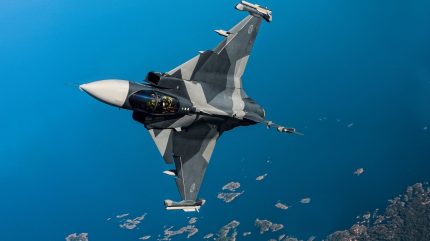
Thailand’s Royal Thai Air Force (RTAF) intends to acquire Saab’s Gripen fighter jets, opting for the Swedish-made aircraft over the widely used Lockheed Martin F-16.
In a statement provided to Airforce Technology, Mattias Rådström, Head of Saab’s Press Centre, confirmed Thailand’s decision: “Saab confirms that the Royal Thai Air Force has announced their wish to purchase Saab’s Gripen fighter. This is clearly very positive for Saab and for Sweden but at this point, there is no contract or any order in place. Saab is looking forward to continuing our discussions with the Royal Thai Air Force and the authorities regarding future fighter capabilities for Thailand.”
The Gripen has seen growing appeal in markets. In recent developments, Saab has solidified its presence in Hungary by securing a contract for four additional Gripen C fighters.
A shift from the US to Europe in Southeast Asian defence
Lockheed Martin’s F-16 remains one of the most widely deployed fighter jets worldwide. For decades, it has been the backbone of several Southeast Asian air forces, including Thailand’s.
Thailand has six different variants of the F-16 multirole aircraft within its Air Force fleet, acquiring them from Lockheed Martin as early as 1988 until most recently 2005, as per GlobalData’s “Thailand Defense Market 2024-2029” report.
Recent developments in F-16 operations include Lockheed Martin’s $520.4m contract for the F-16 Viper Shield electronic warfare (EW) suite, which will enhance the Block 70/72 fighters for countries like Bahrain, Bulgaria, Morocco, Slovakia, and Taiwan.
According to GlobalData’s intelligence on the global military fixed-wing aircraft market, Lockheed Martin is the second leading supplier of military fixed-wing aircraft in Asia-Pacific, holding a 15.2% share of the market over 2023–33.
Broader implications for regional defence markets
Saab’s engagement with Thailand is not new. The RTAF already operates a fleet of Gripen C/D jets acquired in previous deals, and expanding this fleet could provide an upgrade path with logistical and training advantages. For Saab, securing a new agreement with Thailand would solidify its regional footprint.
While Thailand’s announcement is a positive development for Saab, it remains to be seen whether this interest will materialise into a formal contract. As Mattias Rådström noted, “there is no contract or any order in place” at this time, emphasising that discussions are ongoing.
For now, Thailand’s decision to favour the Gripen adds a new dimension to the competitive landscape of its fighter jet procurement.




